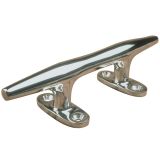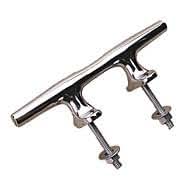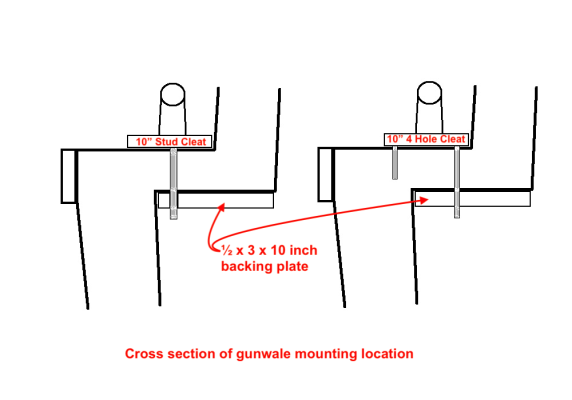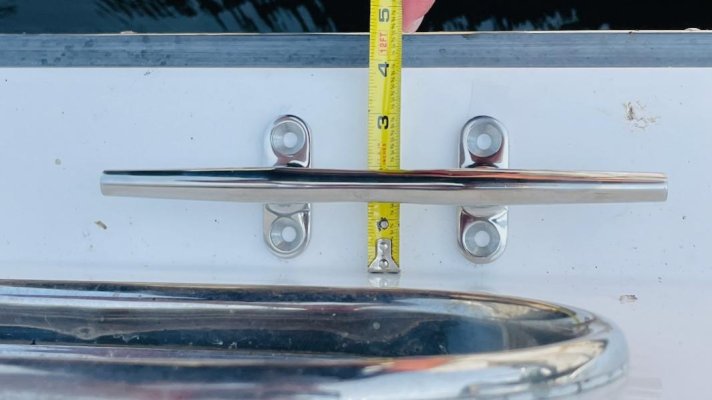HeadedToTexas
Guru
I had not figured mounting 10" Herreshoff cleats to Escape's gunwales would be so difficult. Seems like a ready made location. As with so many things, there are a lot more factors than first appear. The choice has come down to stud or 4 hole mounts.


Both cleats have very similar dimensions and it comes down to the width of the mounting "feet." The 4 hole type takes four ¼-20 screws or bolts and the stud type has ⅜" threaded studs. Either is typically secured through a backing plate from below with washers and nuts.
While there is plenty of flat space on the gunwale for the cleat, the Mariner 37 has thick and beefy shoulders at that point and that means only two holes can penetrate the gunwale to a space below. The attached cross section diagram shows the problem. When the cleat feet are inboard as far as can be, holes for the ⅜" stud penetrate the space below as do the inner pair of holes for the 4 hole cleat, but the outer pair of holes would have to be secured with lag screws.
The problem with the stud cleats is that the ⅜" holes in the FRP backing plates is only ½" from the outer edge. The backing plate will be epoxied to the underside of the gunwale, but being so close to the edge just seems wrong. The inner pair of holes for the 4 hole design are way off center too, but further from the edge.
The entire structure is foam cored at the points shown, so I will be over drilling the holes and filling with thickened epoxy before drilling the final holes. Pretty straightforward there, but if the answer is 4 hole cleats, what is the proper approach to create optimal "bite" for lag screws?
And yes, I am still wrestling with my spring cleat issue. If you're interested, here is a link to the original thread from July 2022.

Both cleats have very similar dimensions and it comes down to the width of the mounting "feet." The 4 hole type takes four ¼-20 screws or bolts and the stud type has ⅜" threaded studs. Either is typically secured through a backing plate from below with washers and nuts.
While there is plenty of flat space on the gunwale for the cleat, the Mariner 37 has thick and beefy shoulders at that point and that means only two holes can penetrate the gunwale to a space below. The attached cross section diagram shows the problem. When the cleat feet are inboard as far as can be, holes for the ⅜" stud penetrate the space below as do the inner pair of holes for the 4 hole cleat, but the outer pair of holes would have to be secured with lag screws.
The problem with the stud cleats is that the ⅜" holes in the FRP backing plates is only ½" from the outer edge. The backing plate will be epoxied to the underside of the gunwale, but being so close to the edge just seems wrong. The inner pair of holes for the 4 hole design are way off center too, but further from the edge.
The entire structure is foam cored at the points shown, so I will be over drilling the holes and filling with thickened epoxy before drilling the final holes. Pretty straightforward there, but if the answer is 4 hole cleats, what is the proper approach to create optimal "bite" for lag screws?
And yes, I am still wrestling with my spring cleat issue. If you're interested, here is a link to the original thread from July 2022.
Attachments
Last edited:


